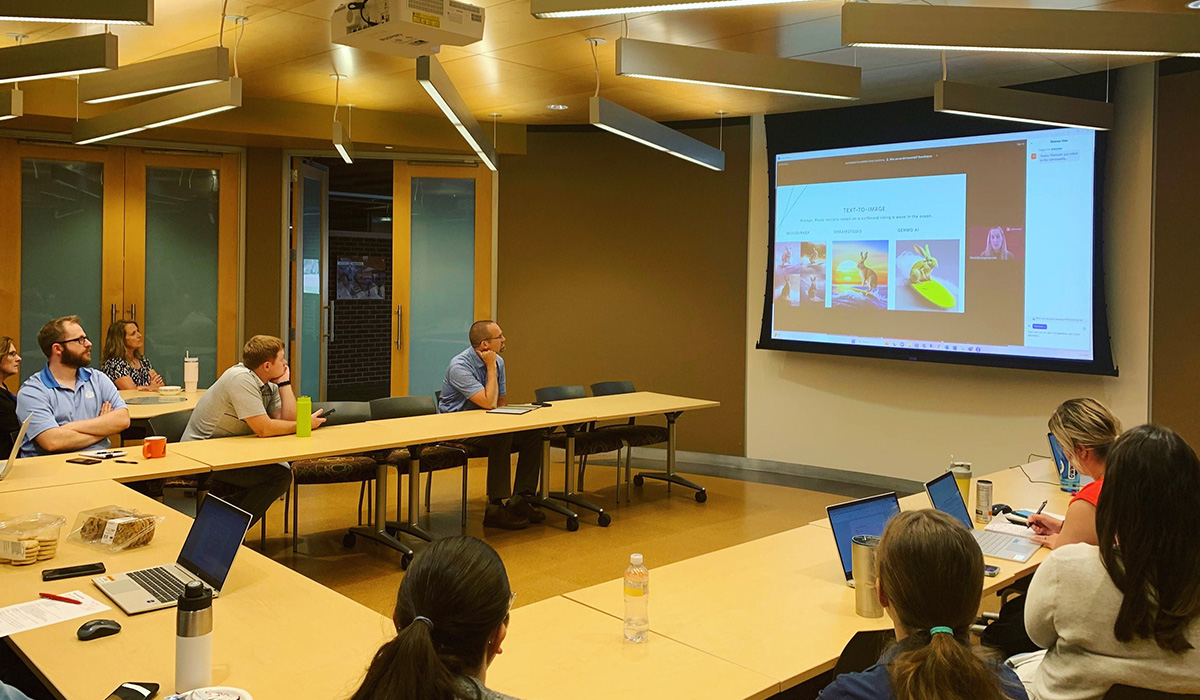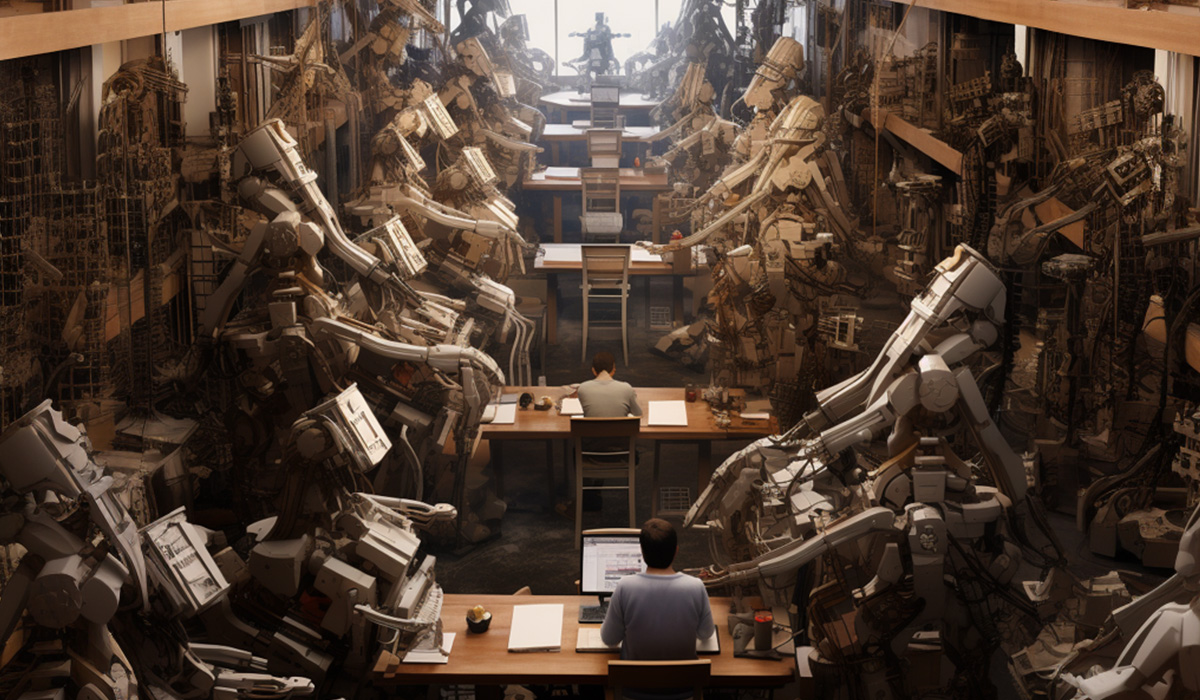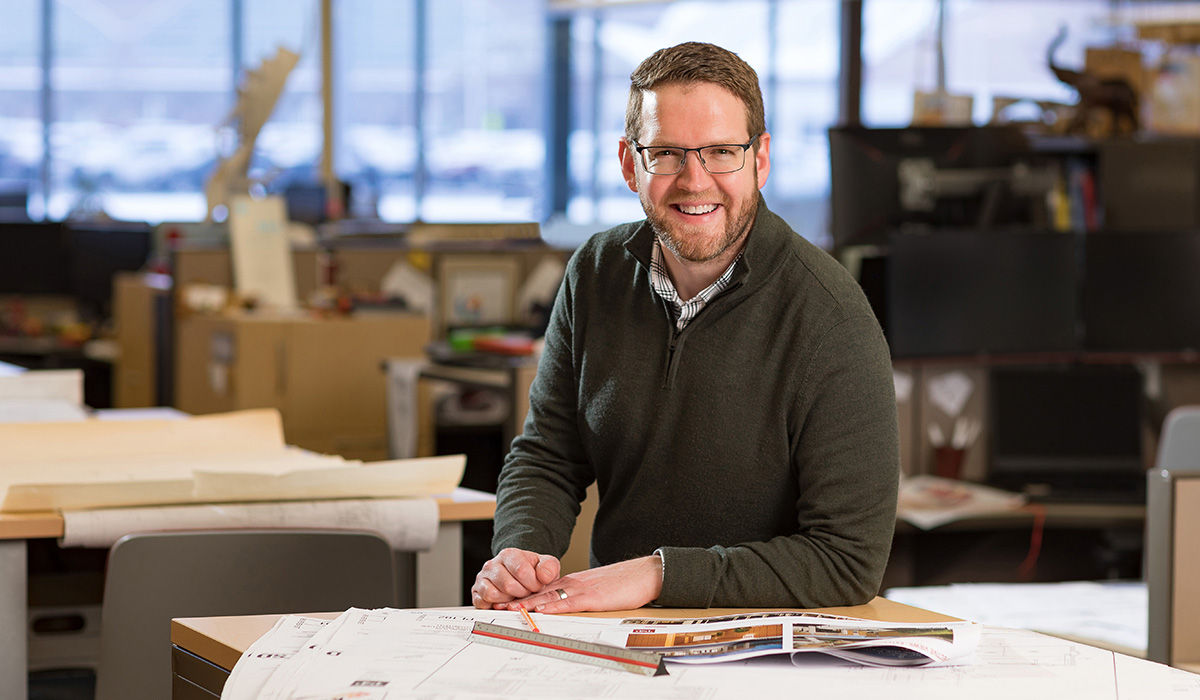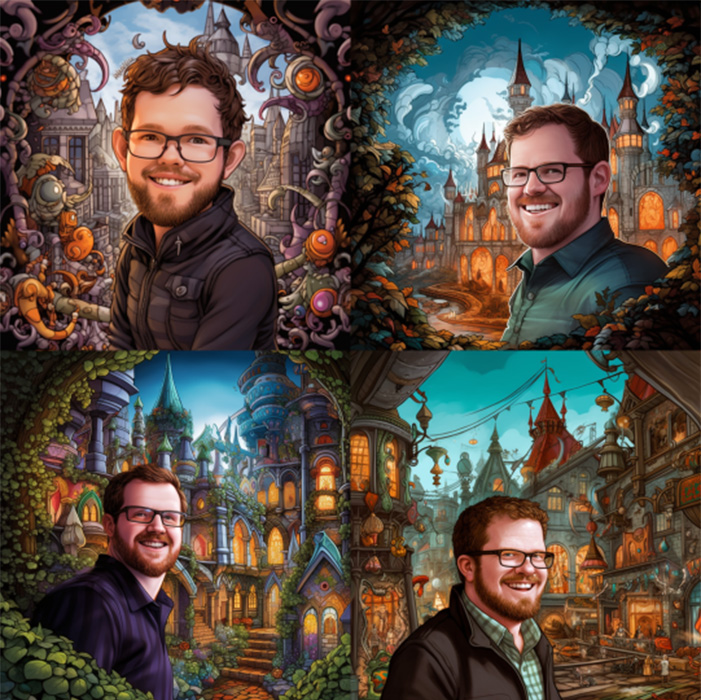Do an online search of common fears associated with artificial intelligence (AI), and the loss of jobs due to AI will likely show up at the top of your search results.
You might also get search results reminiscent of a Hollywood blockbuster where AI gets out of control and creates ethical dilemmas in addition to widespread chaos.
But instead of allowing fear of the unknown to take over and lead to inaction, TSP team members continue to learn more about the current and future implications of AI.
Many staff members are taking part in a three-part summer webinar series devoted to the changing landscape of AI in the Architecture, Engineering, and Construction industry.
Architect Chase Kramer is TSP’s director of design, a role devoted to enhancing design and creative initiatives across the firm.
“My favorite quote on AI and the architecture industry,” Kramer notes, “is AI is not going to replace the architect; the architect who knows how to use AI will replace the architect.”
For instance, it still takes an architect to put this fun AI twist on his own company headshot.
Fun aside, Kramer says now is a good time to have conversations about not only the practical uses but also the ethical and moral implications of AI.
“We want to be ready and know how to properly and ethically incorporate AI into our processes and procedures and not fall behind.”
Kramer sees AI as a beneficial tool to enhance productivity by reducing the time needed for idea generation.
“There is an often-messy iterative aspect of the design process where we need to come up with the best ideas as quickly as possible,” he said.
“AI platforms allow us to quickly see potential results of a design approach or inspirational concept based on a few simple prompts, without investing the heavy lifting of modeling them in detail ourselves first, only to abandon all that effort because we realize that design solution won’t work or isn’t what the client is looking for in the end.”
TSP currently has a subscription to a text-to-image-based AI platform called Midjourney. It’s primary use to date is to help develop inspiration imagery before any tangible building design even develops on early-phase conceptual projects. It has also been used to have a bit of fun.
When the Budweiser Clydesdales were in Sioux Falls in June, Kramer used Midjourney to generate a photo that he compared to an actual photo. Kramer used the prompt “Budweiser Clydesdales at Sioux Falls Convention Center parking lot, photorealistic” for the AI photo.
Existing AI technology can provide access to information that previously required significant study, Kramer said.
“The most straightforward use of AI that people think of in the design world is text-to-image generation – or now even text-to-video generation,” he said.
“This is great for testing design ideas of an exterior or interior look to a space.”
Kramer added that AI also leverages cloud-based data such as site topographical information and climate data overlays to quickly facilitate better analysis and understanding of a project early on.
Many positive implications of AI also involve overall business efficiency, Kramer said, such as reducing the amount of time to put meeting minutes together.
“One potential benefit I see down the road is having chatbots or virtual assistants that team members can use to help find information from our handbook and procedure manuals on demand,” said Kari Kiesow, human resources manager at TSP.
Kiesow is open-minded to the positives AI offers, despite general concerns about privacy and security.
“On the HR side, we need to be cautious of AI when it comes to tasks that could be subject to bias and ethical considerations such as tasks in the recruitment area,” she said.
“With anything, I think there needs to be a good balance between technology and human interaction.”
For architects, Kramer believes AI will be especially helpful for mentorship and can bridge the gap between academia and learning on the job – valuable “lessons learned” that usually only come with time in the seat.
“What AI promises, and it’s not quite there yet, are ways to better filter that data in a conversational approach,” he said.
“Rather than sifting through a checklist of ‘do this’ and ‘don’t do this,’ the best strategies for specific building types, materials, assemblies – you name it – can be properly and quickly curated to limit the hours or research typically needed when diving into something new.”
Kramer noted chatbots already in development can take a firm’s standards and, based not only on what you ask but how you ask, more accurately retrieve the desired results.
Although no one knows where AI might take us, Kramer is still banking on the future of the human architect.
“The overarching function of a designer is to be a trusted advisor to our clients and, in that vein, help extract information from a client who is not always familiar with the industry,” he said.
“I don’t think at this point AI is going to be able to extract and synthesize that information. But it is going to help with administrative tasks, overall productivity, and ultimately lead to better, faster solutions for clients.”







